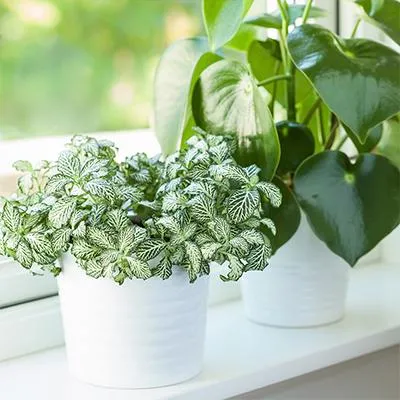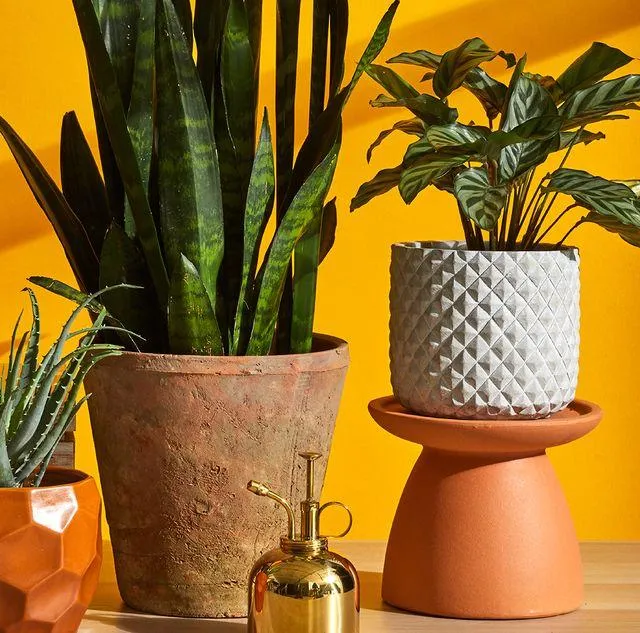The Ultimate Guide to the Best Indoor Plants
Wondering which plants you can grow successfully inside your home? From my experience as an avid indoor gardener, these are the top options that even beginners can thrive with.
Peace Lily (Spathiphyllum)
The peace lily is probably one of the most forgiving houseplants out there. I’ve had situations where I’ve totally forgotten to water mine for weeks, and it somehow survived! Despite my negligence, its bright white flowers still bloomed. Peace lilies like medium to low indirect sunlight and will let you know when they’re thirsty by drooping their leaves. Simply give it a good drink of water when this happens and it will perk right back up. Kinda makes me feel bad for almost killing it sometimes!
Pothos (Epipremnum Aureum)
Pothos is the perfect low maintenance plant for busypeople or forgetful plant parents like myself. This vining plant thrives in low to medium light and you can kinda sorta forget to water it occasionally without consequences. Pothos are amazing trailing plants that look fab hanging from a shelf or dangling over the side of a plant stand. They come in various leaf color variations too, so you can find one to match any décor. Pothos are tough as nails – I’ve seen specimens in offices that somehow survived for years with infrequent watering from overworked employees. How they do it, I have no idea!

Spider Plant (Chlorophytum Comosum)
Spider plants are legendary for being baby-making machines. They produce offsets like nobody’s business that you can pop off and gift to friends. Spider plants prefer medium to bright indirect sunlight. Like pothos, they are quite durable when it comes to watering—they’ll let you know to water them only when their leaves start to look a bit sad and droopy. Give them a drink and wait for their leaves to perk back up within hours. I love propagating their offsets cause it’s fun to watch new plants emerge. Spider plants are low fuss plants that add green foliage to any space.
Snake Plant (Sansevieria)
- Snake plants are near unkillable. I swear these things could survive a nuclear fallout with no problem. They prefer low indirect light and can go way longer than the average plant between waterings. In my experience, snake plants are the perfect choice for extreme plant neglecters cause they basically take care of themselves with zero effort. You’ll be hard pressed to find a plant as tough and low maintenance as a snake plant. I mean these things have been NASA approved to help clean air on space stations, so they must be indestructible right?
- Snake plants come in various height, width and colorful leaf pattern varieties too. So you can find one that fits your aesthetic no matter what kind of home decor style you have. They make excellent table top plants or floor plants in general. Snake plants honestly don’t require much more than the occasional drink of water. Talk about easy peasy plants!
ZZ Plant (Zamioculcas Zamiifolia)
Another unfussy plant pick is the ZZ plant. These plants could thrive in a desert with their extreme drought tolerance levels in my opinion. Much like snake plants, ZZs can go forever without water and would probably survive several apocalypses back to back. They enjoy medium to low indirect sunlight. Though ZZs prefer the dry side, don’t be afraid to give them a good soak whenever the soil is completely dry. These plants add handsome green variegated or solid green calaxy-like foliage to spaces with minimal maintenance. ZZ plants are low stress, high reward houseplants for sure.
Chinese Evergreen (Aglaonema)
Chinese evergreens come in a multitude of colors from pink and lime green variegated leaves to solid green and red. They enjoy medium to low indirect light. As long as their soil isn’t left sopping wet, Chinese evergreens can handle varying moisture levels well. Allow them to dry out slightly between waterings and you’ll be solid. These plants add beautiful splashy foliage without much effort on your part. In my experience, aglaonemas are drama-free work horses that not only look good but also filter toxins from the air. TBH after a long day at the office, coming home to my thriving aglaonema collection kinda lifts my spirits no cap.

Cast Iron Plant (Aspidistra Elatior)
Similar to snake plants, cast iron plants are famous for being very difficult to kill. I mean, these plants were common fixtures in Victorian homes without access to natural light. That should tell you something about their hardiness. Cast iron plants enjoy medium to low indirect light. Let their soil dry out well between waterings and they’ll be A-OK. Apparently people tried to assassinate these plants for decades through negligence and harsh conditions to no avail! Some have even survived over 100 years of neglectful treatment. Talk about the ideal bulletproof plant even for the biggest plant killers out there. These green arching stalks add a unique textural element to any space.
On the other hand, take care not to overwater any of these foolproof plants, especially during their dormant winter season when they’ll need less moisture. Soggy wet soil can definitely cause root rot, even in species as durable as snake plants and pothos. I once made this mistake with a cast iron plant during a cold spell when it didn’t dry out for weeks – the poor thing lost some leaves as a result. Live and learn! Overall, these are stellar low maintenance plants for any home or apartment that even those without a green thumb could manage with little fuss. Hope this list gave you some inspired ideas for your indoor plant collection! Feel free to ask if you need any other plant recommendations.
Top Plants for Indoor Growing
| Plant | Care Level | Light Needs | Water Needs | Size |
|---|---|---|---|---|
| Pothos | Low | Low | Let dry out between waterings | Small to medium |
| Snake plant | Very low | Low | Let dry out completely | Medium to large |
| Chinese evergreen | Low | Medium | Water when top inch of soil is dry | Small to medium |
| Peace lily | Low | Medium | Water when top inch of soil is dry | Small to medium |
| ZZ plant | Very low | Low | Let dry out between waterings | Medium to large |
FAQ
-
What are some good houseplants to start with?
Pothos, snake plants, and bamboo palm are basically foolproof plants that can handle low light without too much care. They’re very kind of easy plants to look after.

-
Do indoor plants need much sunlight?
A lot of popular indoor plants like pothos and peace lilies can survive with just a few hours of indirect light each day. However, spider plants and devil’s ivy typically need brighter light to stay bushy and colorful. So it depends on the plant, but mostly they don’t actually need full sun.
-
How often should I water houseplants?
A good rule of thumb is to check if the soil is dry about an inch below the surface before watering. This usually works out to once every 7-10 days for most plants. But the schedule will vary depending on things like sunlight, humidity, and the size of the pot. The soil and drainage are key – you don’t want soggy wet feet!
-
Can plants purify indoor air?
Some research shows that certain plants may help remove toxins like formaldehyde, benzene, and trichloroethylene from the air. Spider plants, bamboo palm, and English ivy are reported to be good air-cleaning plants. On the other hand, their effects are fairly small, so don’t rely on houseplants as a replacement for good ventilation!

-
How do I keep indoor plants healthy?
In addition to adequate light and water, your plants will need nutrients to stay in good shape. Fertilizing every few months during the growing season helps replace minerals. Be on the lookout for pests too – an occasional neem oil spray might save you from an infestation. Proper care takes some effort, but healthy houseplants can really liven up a space.
-
What’s a good starter plant for novice gardeners?
Pothos and snake plants are amazingly resilient – they’l basically survive all sorts of abuse from beginners. Peace lilies and spider plants also forgive missed waterings or weeks in low light. Just don’t overwater! The trick is finding something you really like so you’ll want to care for it. A stunning plant can inspire a green thumb.
-
Are some indoor plants better than others at improving air quality?
According to numerous studies, spider plants, english ivy and bamboo palms are among the best plants for clearing indoor toxins like formaldehyde, benzene, and trichloroethylene. These plants absorb pollutants through their leaves. On the other hand, their effects are modest – don’t count on houseplants alone to do the job of a proper ventilation system! It’s best to combine plant power with fresh air flow.
